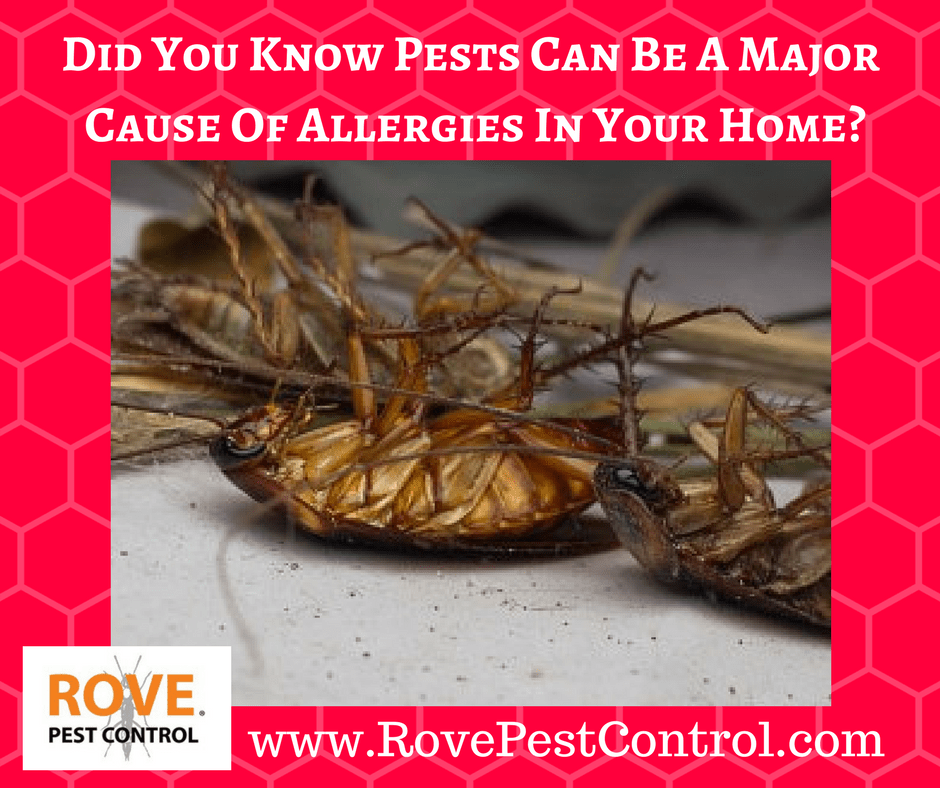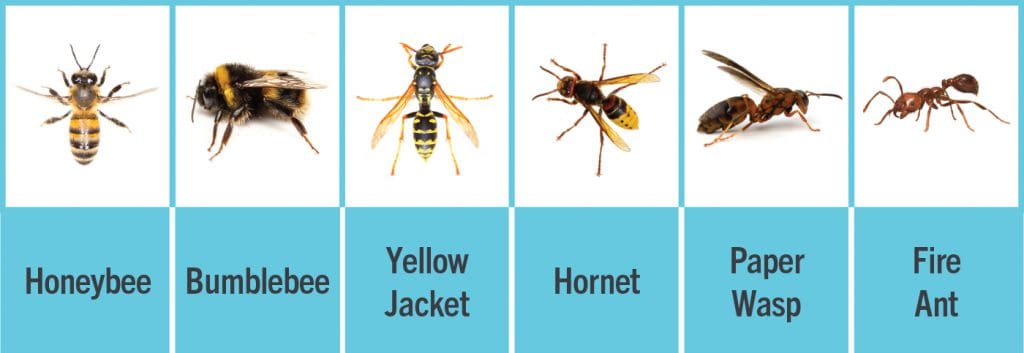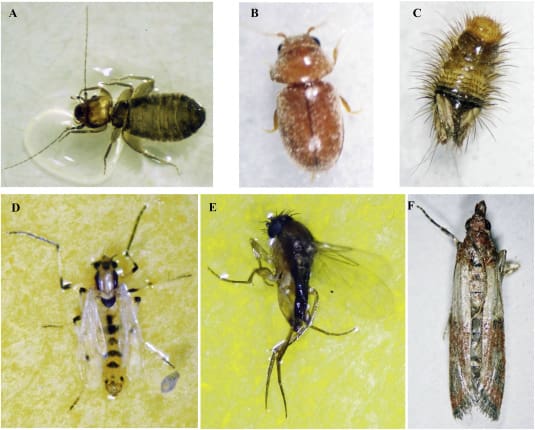Did you know that pests can actually trigger allergies? It’s true! In this article, we will explore the fascinating relationship between pests and allergies. From common household pests like cockroaches and dust mites to outdoor nuisances like pollen-carrying insects, these critters can wreak havoc on your health. We’ll discuss which pests are the biggest culprits, the symptoms they can cause, and most importantly, how to effectively control and prevent them. So if you’re tired of dealing with sneezing, itchy eyes, and all the other unpleasant symptoms, read on to discover how pests may be the hidden cause behind your allergies.

Introduction to Pests and Allergies
pests and allergies are two issues that can greatly affect our daily lives and overall well-being. It is important to have a clear understanding of what these terms mean and how they are interconnected.
Pests, in the context of this article, refer to insects, rodents, and other unwanted creatures that invade our homes. They can include common household pests like cockroaches, ants, bed bugs, and rodents.
Allergies, on the other hand, are exaggerated immune responses to substances that are typically harmless to most people. These substances, known as allergens, can cause allergic reactions in sensitive individuals.
The connection between pests and allergies lies in the fact that many pests are known to produce allergens, which can trigger allergic reactions in susceptible individuals. In this article, we will explore the various pests that can cause allergies, the symptoms associated with these allergies, and how to prevent and manage them effectively.
Allergies Caused by Household Pests
Common household pests can be a significant source of allergens within our living spaces. Let’s take a closer look at some of these pests and the allergens they produce.
Common indoor pests and their allergens
Cockroaches, dust mites, rodents, ants, as well as bees and wasps are among the most common household pests that can cause allergies. Each of these pests produces specific allergens that can trigger allergic reactions in sensitive individuals.
Dust mites, for example, are tiny insects that feed on dead skin flakes shed by humans and pets. Their waste products, including feces and body parts, contain potent allergens that can become airborne and trigger allergic reactions when inhaled.
Cockroaches are another notorious pest in terms of allergens. Their feces, saliva, and shed skin particles can cause allergic reactions, especially in densely infested areas.
Rodents, such as mice and rats, not only carry disease-causing pathogens but also produce allergens through their urine, feces, and dander. These allergens can easily become airborne and cause respiratory allergies.
Ants, bees, and wasps, while known primarily for their painful stings, can also elicit allergic reactions in individuals who are sensitive to their venom.
Symptoms of pest-induced allergies
Allergic reactions caused by pests can manifest in various ways. Common symptoms include sneezing, coughing, runny or stuffy nose, itchy eyes, skin rashes, and wheezing. In more severe cases, individuals may experience difficulty breathing, chest tightness, and even anaphylactic shock.
It is crucial to note that the severity and duration of these symptoms can vary depending on the individual’s sensitivity to the allergens and the extent of exposure.
Risk factors for developing pest-related allergies
Certain factors can increase an individual’s susceptibility to pest-related allergies. These include genetic predisposition, pre-existing respiratory conditions like asthma, weakened immune systems, and prolonged or repeated exposure to pest allergens.
It is essential to identify and address these risk factors to effectively prevent and manage allergies caused by household pests.
Types of Pest-Induced Allergies
Different pests can elicit specific allergic reactions. Let’s explore the common types of allergies induced by household pests.
Dust Mite Allergies
Dust mites are a major cause of allergies, particularly in indoor environments. Their allergens can trigger allergic reactions and asthma symptoms. Regular cleaning and maintenance can help reduce dust mite populations and minimize exposure to their allergens.
Cockroach Allergies
Cockroaches produce allergens that can lead to allergic reactions and asthma exacerbations. effective pest control measures and proper sanitation can help prevent infestations and minimize allergen exposure.
Rodent Allergies
Rodents, such as mice and rats, produce allergens that can cause allergic reactions in sensitive individuals. To prevent rodent infestations and minimize allergen exposure, it is crucial to ensure proper sanitation and seal any entry points in homes.
Ant Allergies
Ants, while less common as allergen sources, can elicit allergic reactions in sensitive individuals who are stung. Prompt and appropriate measures must be taken to manage ant infestations and minimize the risk of allergic reactions.
Bee and Wasp Allergies
Venom from bee and wasp stings can cause severe allergic reactions, including anaphylactic shock, in individuals who are allergic. It is essential to seek immediate medical attention in case of a bee or wasp sting allergy.
Bed Bug Allergies
While bed bugs are primarily known for their bites, their shed skin and feces can also cause allergic reactions in certain individuals. Effective pest control methods are necessary to eliminate bed bug infestations and minimize allergen exposure.
How Pests Trigger Allergic Reactions
Understanding how pests transmit allergens can provide valuable insights into allergy prevention and management. Let’s explore the various ways pests can trigger allergic reactions.
Introduction to allergens
Allergens are substances that can induce allergic reactions in sensitive individuals. Pests produce different types of allergens, such as proteins in their saliva, feces, urine, shed skin particles, and venom.
Methods of allergen transmission by pests
Pests can transmit allergens through various means, including direct contact, inhalation, and bites or stings.
Direct contact with allergens
In the case of dust mites and cockroaches, allergens can be present on surfaces, such as bedding, furniture, and carpets. Direct contact with these allergen-laden surfaces can lead to allergic reactions, especially when individuals touch their eyes, nose, or mouth.
Inhalation of pest-related allergens
Many pest allergens become airborne, allowing them to be easily inhaled by individuals. This can happen with dust mites, cockroaches, rodents, and even certain ants. Inhaling these allergens can trigger respiratory allergies and asthma symptoms.
Allergic reactions through bites and stings
Venom from bee and wasp stings can cause immediate allergic reactions in individuals who are allergic or sensitized to their venom. While less common, some individuals may also experience allergic reactions to ant bites.

Preventing and Managing Pest-Induced Allergies
Prevention and effective management are key to minimizing the impact of pest-induced allergies. Here are some strategies to consider:
Maintaining a clean and hygienic environment
Regular cleaning and proper sanitation can help reduce pests and their allergens in the home. This includes thorough cleaning of surfaces, removal of food debris, proper waste disposal, and keeping indoor areas dry and well-ventilated.
Effective pest control methods
Implementing effective pest control measures is essential in preventing and managing pest allergies. This can involve using traps, baits, physical barriers, and insecticides, among other methods. It is important to choose environmentally-friendly and safe pest control products to minimize the risk of additional allergies.
Use of allergen-proof bedding and furniture covers
Using allergen-proof covers for mattresses, pillows, and furniture can provide an additional barrier against common pests like dust mites and their allergens. These covers are designed to prevent allergens from penetrating and accumulating in these areas.
Proper food storage and waste disposal
To minimize pest infestations and allergen exposure, it is crucial to store food properly in sealed containers and dispose of waste promptly. This helps to eliminate potential food sources and attractants for pests.
Regular vacuuming and cleaning routines
Regular vacuuming and dusting can help remove allergens, such as dust mite debris and cockroach allergens, from carpets, rugs, and surfaces. It is recommended to use vacuum cleaners with high-efficiency particulate air (HEPA) filters for optimal allergen removal.
Medication and allergy management for individuals prone to pest allergies
For individuals prone to pest allergies, it may be necessary to seek medical advice and use allergy medications, such as antihistamines or nasal sprays. Allergy shots, or immunotherapy, can also be considered for long-term management of allergies caused by pests.
Professional Pest Control Services for Allergen Reduction
While DIY methods can be effective, professional pest control services can offer additional benefits in allergen reduction. Consider the following advantages of hiring certified pest control professionals:
Benefits of professional pest control services
Professional pest control services employ trained technicians who have the knowledge and expertise to identify, treat, and prevent pest infestations. They can provide customized solutions tailored to specific pest allergies and ensure effective allergen reduction.
Techniques used to reduce pest allergens
Professional pest control technicians utilize various techniques to reduce pest allergens, such as targeted pest removal, sealing entry points, and implementing integrated pest management (IPM) strategies. These methods focus on long-term pest prevention and minimize the use of harsh chemicals.
Integrated Pest Management (IPM) strategies
IPM is an environmentally-friendly approach that combines multiple pest control techniques to manage pests effectively. It involves techniques such as habitat modification, exclusion, monitoring, and the use of least-toxic methods to control pests and minimize allergen exposure.
Hiring certified pest control professionals
When selecting a pest control provider, it is important to choose certified professionals who adhere to industry standards and best practices. Certification ensures that technicians are well-trained and follow ethical and safe pest control procedures.
Regular inspections and maintenance
Professional pest control services often offer regular inspection and maintenance plans to ensure continuous allergen reduction. These routine visits help identify and address any pest issues before they become major problems, minimizing the risk of allergies.

Impact of Pests and Allergies on Health
Pests and allergies can have significant consequences for our health and well-being. It is important to understand the potential long-term effects and impacts on different aspects of our lives.
Long-term effects of untreated pest allergies
Untreated pest allergies can lead to chronic health problems, including persistent respiratory symptoms, frequent asthma attacks, and skin conditions. These conditions can significantly affect an individual’s quality of life and daily functioning.
Negative impact on respiratory health
Pests like dust mites and cockroaches can cause or worsen respiratory conditions, such as asthma and allergic rhinitis. Prolonged exposure to their allergens can result in chronic inflammation of the airways, leading to persistent respiratory symptoms and reduced lung function.
Exacerbation of existing allergies and asthma
For individuals already suffering from allergies or asthma, exposure to pest allergens can trigger exacerbations and worsen symptoms. It is crucial to minimize allergen exposure through effective pest control measures to prevent these flare-ups.
Increased risk of secondary infections
Some pests, such as rodents and bed bugs, can transmit disease-causing pathogens. Individuals with weakened immune systems or existing respiratory conditions are particularly vulnerable to these secondary infections. Proper pest control and hygiene practices are essential to reduce the risk of such infections.
Impact on mental health and quality of life
Pests and allergies can have a profound negative impact on mental health and overall quality of life. The stress, anxiety, and sleep disturbances caused by pest infestations and allergic reactions can significantly affect emotional well-being, productivity, and social interactions.
Product Reviews: Allergy Control Solutions
There are various products available in the market that can help control allergens associated with pests. Here are some options worth considering:
Allergen-impermeable mattress and pillow covers
These covers are designed to encase mattresses and pillows, preventing dust mites and other allergens from penetrating through. They create a barrier that reduces exposure to pest-related allergens during sleep.
High-efficiency particulate air (HEPA) filters
HEPA filters are designed to capture tiny particles, including allergens, suspended in the air. They can be used in air purifiers, vacuum cleaners, and HVAC systems to improve indoor air quality and reduce allergen levels.
Vacuum cleaners with HEPA filters
Vacuum cleaners equipped with HEPA filters are effective in removing allergens from carpets, rugs, and upholstery. They not only pick up dust mite debris and cockroach allergens but also trap them within the vacuum, preventing them from being released back into the air.
Air purifiers for allergen reduction
Air purifiers with HEPA filters can help reduce allergens, including those associated with pests, in indoor environments. They work by continuously circulating and filtering the air, capturing airborne allergens and improving overall air quality.
Natural and safe pest control products
There are natural and safe pest control products available that can effectively manage pests without the use of harsh chemicals. These products use ingredients such as essential oils, diatomaceous earth, and botanical extracts to repel or eliminate pests.

Sustainable Pest Control Solutions and Allergies
In addition to allergen control, it is important to consider sustainable pest control methods that minimize environmental impact. Here are some sustainable solutions for pest control:
Environmentally friendly pest control methods
Environmentally friendly pest control methods focus on minimizing harm to the environment while effectively managing pests. These methods include habitat modification, exclusion, biological controls (such as natural predators or parasites), and cultural practices.
Safe alternatives to chemical-based treatments
Chemical-based pest control treatments can be effective, but they may pose risks to human health and the environment. Safe alternatives include the use of natural repellents, traps, and physical barriers.
Organic pest control products
Organic pest control products are made from natural, plant-based ingredients and do not contain synthetic chemicals. These products are safe to use and can effectively manage pests without causing harm to people, pets, or the environment.
Benefits of sustainable pest control for allergy sufferers
By opting for sustainable pest control methods, allergy sufferers can minimize exposure to potentially harmful chemicals and reduce the risk of additional allergies. Sustainable practices also promote a healthier environment, which can have a positive impact on overall well-being.
Conclusion
Pests and allergies are woven together in a complex relationship. Understanding the connection between pests and allergies is vital for preventing and managing allergic reactions caused by common household pests. By implementing effective pest control measures, maintaining cleanliness, and using appropriate allergy management strategies, individuals can create healthier living environments and improve their quality of life. Remember to choose sustainable pest control solutions, consider allergen-impermeable bedding and furniture covers, and utilize products that can reduce allergens and promote allergen control.


I am Randy, the author behind PestControld.com. Drawing from decades of experience, I aim to provide valuable insights, expert advice, and practical recommendations to help you make informed decisions when assessing viable pest control solutions.